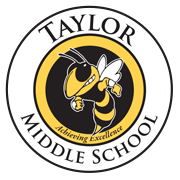Side Menu Begins
HomeAbout TMSAcademicsAttendanceCharacter EducationClubs/ActivitiesCore ValuesFeesFinalFormsFood ServiceGifted EducationGuidance DepartmentHealth ServicesMedia Center PK-12Parent PortalPay to Participate 25-26PaySchools CentralProgress BookPTOReport BullyingSchool ProgramsSpirit ShopStudent FeesStudent HandbookTMS Supply ListsSide Menu Ends, main content for this page begins

